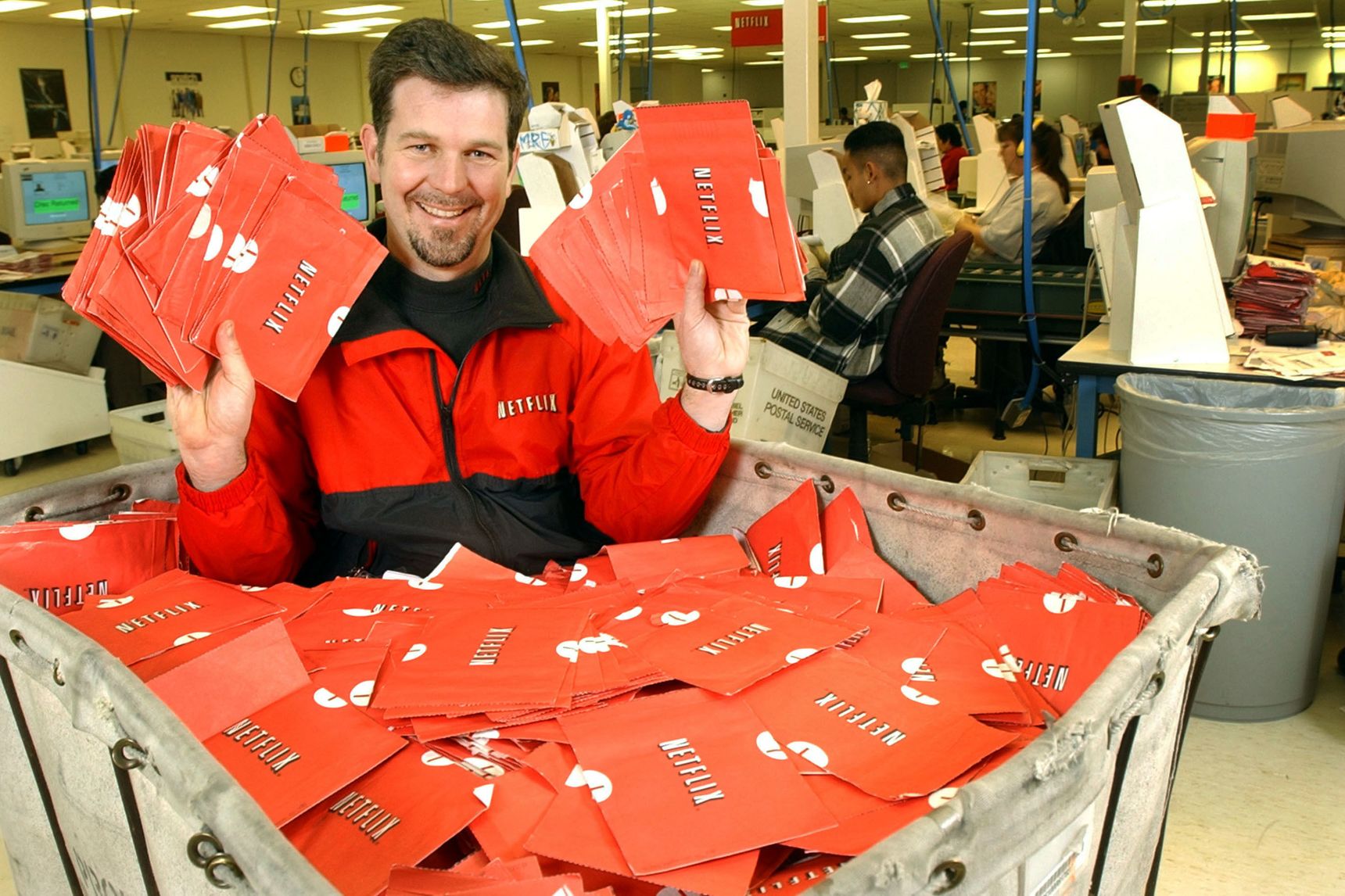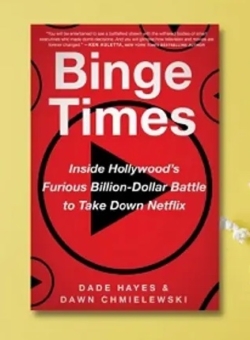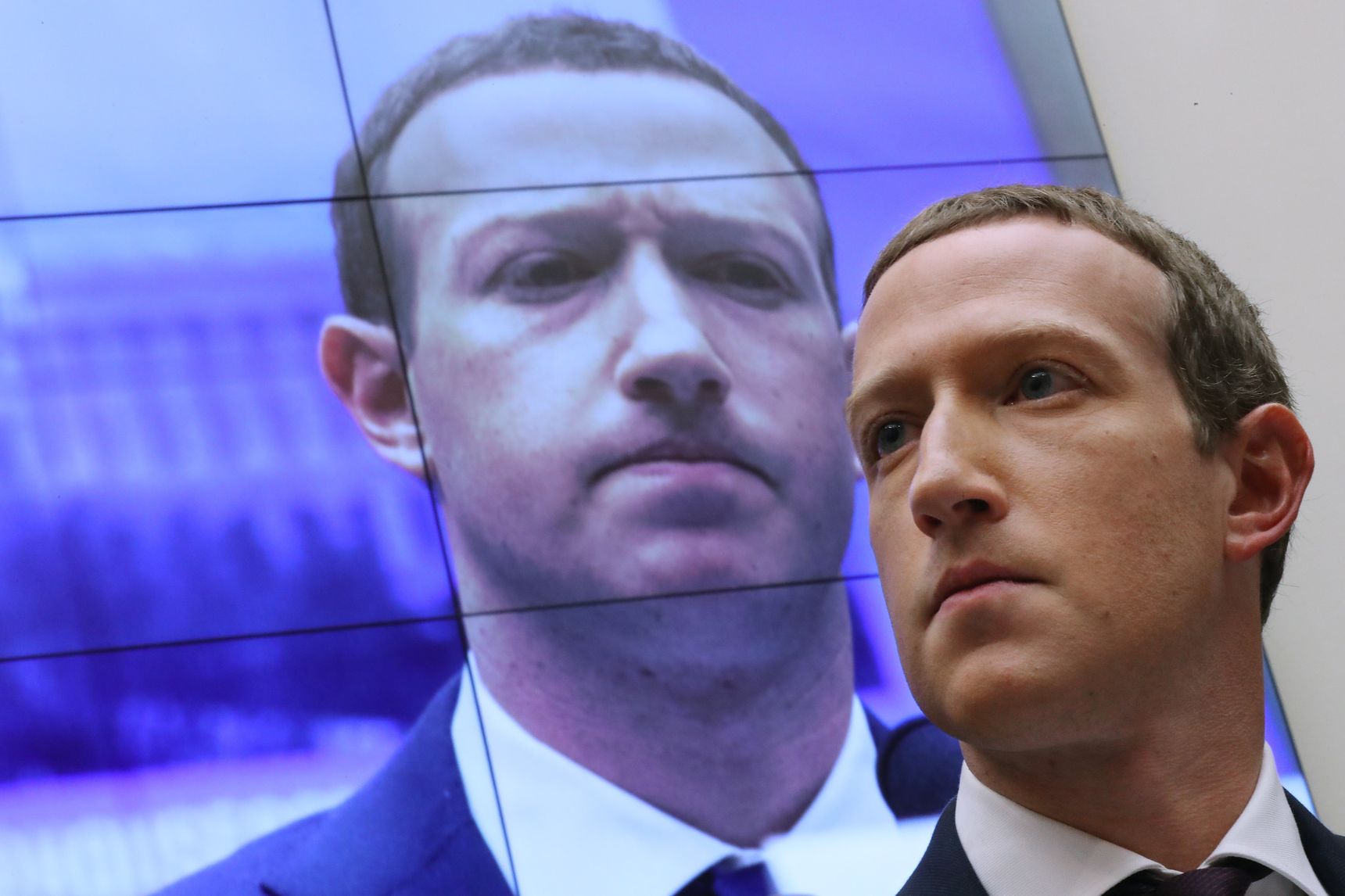
Netflix co-founder Reed Hastings in 2002. Photo: Justin Sullivan, Getty Images
WHEN READING ABOUT THE MEDIA BUSINESS these days, there are some things you know without being told. You can be pretty sure that when a bunch of conglomerates come together to create something they call TV Everywhere, it will end up delivering TV nowhere. Or that when the head of a mighty corporation says, of a pint-size digital competitor, “It’s a little bit like, is the Albanian army going to take over the world?”—the answer is going to surprise him.

BINGE TIMES: Inside Hollywood’s Furious Billion-Dollar Battle to Take Down Netflix
By Dade Hayes and Dawn Chmielewski
William Morrow
That was Jeffrey L. Bewkes, Time Warner’s CEO, famously dismissing the threat of Netflix in 2010. Ten years before, Time Warner had been the biggest media conglomerate of them all. But having sold itself to AOL in 2000 in a near-disastrous attempt to achieve digital competence, it went on to shed its cable-system subsidiary, its music colossus, its magazine empire and AOL itself before Mr. Bewkes, in 2018, sold what was left to AT&T for $85.4 billion. This month, AT&T offloaded WarnerMedia to Discovery Inc. for barely half that amount.
The men who ran these conglomerates were a hubristic lot, chasing dominance in an analog industry while remaining utterly clueless about the coming digital tsunami. It was only a matter of file size: Music labels were already being gutted by the early aughts, but movie studios and television networks, whose output requires vastly more bandwidth, had another decade to contemplate the inevitable—not that it did them much good.
Books: Digital Life |
Learning to Live With AICo-intelligence, by Ethan MollickThe Wall Street Journal | April 3, 2024 |
Swept Away by the StreamBinge Times, by Dade Hayes and Dawn ChmielewskiThe Wall Street Journal | April 22, 2022 |
After the DisruptionSystem Error, by Rob Reich, Mehran Sahami and Jeremy WeinsteinThe Wall Street Journal | Sept. 23, 2021 |
The New Big BrotherThe Age of Surveillance Capitalism, by Shoshana ZuboffThe Wall Street Journal | Jan. 14, 2019 |
The Promise of Virtual RealityDawn of the New Everything, by Jaron Lanier, and Experience on Demand, by Jeremy BailensonThe Wall Street Journal | Feb. 6, 2018 |
When Machines Run AmokLife 3.0, by Max TegmarkThe Wall Street Journal | Aug. 29, 2017 |
The World’s Hottest GadgetThe One Device, by Brian MerchantThe Wall Street Journal | June 30, 2017 |
Confronting the End of PrivacyData for the People, by Andreas Weigend, and The Aisles Have Eyes, by Joseph TurowThe Wall Street Journal | Feb. 1, 2017 |
We’re All Cord Cutters NowStreaming, Sharing, Stealing, by Michael D. Smith and Rahul TelangThe Wall Street Journal | Sept. 7, 2016 |
Augmented Urban RealityThe City of Tomorrow, by Carlo Ratti and Matthew ClaudelThe New Yorker | July 29, 2016 |
Word Travels FastWriting on the Wall, by Tom StandageThe New York Times Book Review | Nov. 3, 2013 |

 April 22, 2022
April 22, 2022



